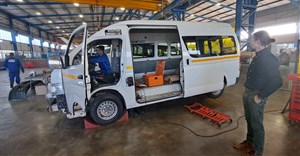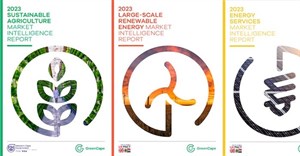Trending




 Sabre EMEA 2024 Awards: Razor PR, Retroviral top SA agenciesDanette Breitenbach
Sabre EMEA 2024 Awards: Razor PR, Retroviral top SA agenciesDanette Breitenbach
Elections 2024
Jobs
- Technical Energy Journalist - Freelance Johannesburg
Evolving technology will change the face of mining

Today, the picture is looking very different. Technological disruption is replacing the need for copper infrastructure, for example. Digital and renewable technology has provided a path to development that requires fewer of the traditional minerals on which many nations industrialised – and more of others.
While copper cables carried voice communication and television signal to millions of homes in the northern hemisphere during the 20th century, many developing countries have jumped straight to cellular phones and satellites.
Strategic economic and political decisions are also being driven by the need to reduce carbon emissions. After more than a century of hydrocarbon-powered cars and vehicles, there has begun a drastic shift towards battery power. Minerals like lithium, cobalt and rare earths – some of the constituents of the batteries and fuel cells that will drive vehicles – are increasingly becoming where the mining industry’s interest will lie.
Even the lubricants for these vehicles will need to change. The oils we use for today’s internal combustion engines, as advanced as they are, are still not refined enough to suit an electric motor.
New mining locations
Starting with geography, the known deposits of many of these new ‘battery minerals’ tend to be located in non-traditional mining areas. Rare earths, for example, are mainly in Asia, including China and Japan. Lithium deposits are highly sought after. The growing demand for cobalt – once a little-appreciated by-product of copper mining – has now led to mines that focus on the mineral itself. This will be to the benefit of countries like the Democratic Republic of Congo, which hosts many of these rich deposits.
This is likely to affect the strategic geopolitical status of certain countries – in the same way that the presence of oil or coal reserves has done in the past. At the very least, the shift in mineral demand will bring the opportunity for economic development to new areas, where gross domestic product could be substantially boosted by this turn of fortune. For the mining industry, players are needing to look beyond their traditional geographic horizons.
Large batteries
As energy generation moves away from fossil fuels to renewable sources, so the search is on for large-scale battery storage capacity to maintain baseload from renewable sources that are less reliable. Wind and solar power have seen an upsurge in the past decade, but generally cannot provide the baseload traditionally supplied by coal or gas generation.
Innovation in technologies is matched by new models of power generation. Australia is creating neighbourhood networks of solar power generation, driven by solar panels on the roofs of homes. The electricity is shared among the residents – rather like an energy co-operative.
All this points to the central role that battery storage could play in the future of our societies, replacing many aspects of power generation, transmission and distribution that exist today. The impact on mining will be significant.









